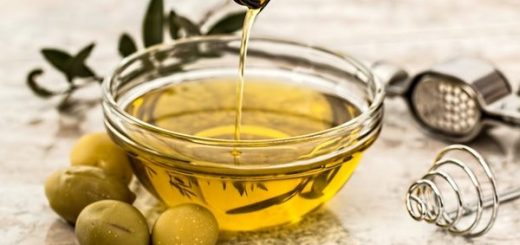Types of Olive Oil: Little Known Properties and How to Use?

When purchasing olive oil, it is not enough to just decide on the brand. Because there are many types of olive oil available in the market. If you do not know the types and characteristics of olive oil, you may have a hard time shopping at the market.
Olive Oil Types
- Organic Olive Oil
- Natural Olive Oil
- Natural Extra Virgin Olive Oil
- Cold Pressed Olive Oil
- Refined Olive Oil
- Raw Olive Oil
- Stone Pressed Olive Oil
- Natural First Olive Oil
- Early Harvest Olive Oil
- Riviera Olive Oil
- Flavored Olive Oil
In this article, we sought an answer to the question of “what are the types of olive oil” for you. Especially edible olive oil varieties are very curious, we know that! For this reason, we also talked about the usage areas of olive oil varieties that we mentioned in our article.
There it is; olive oil types and properties…
Olive Oil Varieties and Little Known Properties
1) Organic Olive Oil
- Organic olive oil, as the name suggests, is a type of olive oil that does not use pesticides, fertilizers or any chemicals during its production.
- Every stage of production is inspected by the relevant institutions. Products that comply with organic production conditions are certified with a special number.
- It can be consumed in its natural form.
- It is mostly used in sauces, salads and hot dishes.
2) Natural Olive Oil
- Natural olive oil is obtained as a result of some mechanical and physical processes in the thermal environment that will not cause any change in the natural qualities of the olive.
- The thermal environment is maximum 32 degrees.
- Only processes such as washing, centrifugation and filtration are applied to olives.
3) Extra Virgin Olive Oil
- Natural extra virgin olive oil is suitable for direct consumption. It is mostly consumed raw.
- The preferred olive oil for breakfast is extra virgin olive oil. Except this; It is used in pastries, rice, pasta, salads, sauces and stir-fries.
- In oils of this category, the free fatty acidity in terms of oleic acid is not more than 0.8 grams per 100 grams.
- The fruitiness of extra virgin olive oil cannot be greater than 0 in the sensory test. From this point of view, we can say that extra virgin olive oil is a perfect oil.
4) Cold Pressed Olive Oil
- Cold pressed olive oil is a type of olive oil obtained before the dough temperature rises above 26 degrees during production.
- In this production, olive does not lose its sensory properties.
- It smells like cold pressed olive oil. Its aroma is fruity. The taste is slightly bitter. For this reason, when consumed, it causes a slight burning sensation in the throat.
- Cold pressed olive oil is a type of oil with high antioxidant content.
- It is mostly used in hot and cold dishes.
5) Refined Olive Oil
- Refined olive oil is obtained as a result of refining crude olive oil by various methods.
- In oils in this category, the free fatty acidity in terms of oleic acid is not more than 0.3 grams per 100 grams.
- Refined olive oil is mostly preferred in cakes, pastries, desserts and fried foods.
6) Crude Olive Oil
- It is a type of olive oil with a free fatty acidity of 2 grams in terms of oleic acid.
- In addition, the sum of defects in the sensory test is higher than 3.5.
- Crude olive oil is not suitable for direct consumption, therefore it is refined.
7) Stone Pressed Olive Oil
- Stone pressed olive oil is produced using ancient production techniques.
- The production phase is laborious and long.
- It is obtained by crushing olives by drawing a circle from a large round stone.
- Stone-pressed olive oil, olive juice and pulp are also available. The oil is then distilled; Thus, the pulp and juice are separated.
8) Natural First Olive Oil
- The free fatty acidity of natural first olive oil is not more than 2 grams per 100 grams in terms of oleic acid.
- In the sensory test, the total number of defects is at most 3.5. Its fruitiness is greater than 0.
- Oils in this category are suitable for direct consumption. Therefore, it is consumed raw.
9) Early Harvest Olive Oil
- Early harvest olive oil, as the name suggests, is obtained from olives that are harvested before they are fully ripe.
- The early harvest period of olives varies from region to region. Olives, which are generally harvested in September and October, are used for this oil.
- The production of early harvest olive oil is relatively more difficult than the others. Its price is also more expensive than other types of olive oil.
10) Riviera Olive Oil
- Riviera consists of a mixture of refined olive oil and natural olive oils suitable for direct consumption.
- Free fatty acidity in terms of oleic acid is not more than 1 gram.
- Riviera olive oil is generally used in rice, pasta, fries, pastries, desserts and pot dishes.
11) Seasoned Olive Oil
- As the name suggests, flavored olive oil is obtained by adding different spices, fruits, vegetables and herbs to olive oil.
- Olive oils in this group have all the characteristics of oils in their category.
- Seasoned olive oil is often used in sauces, salads and for breakfast; the most commonly preferred flavorings are rosemary, thyme or garlic.











